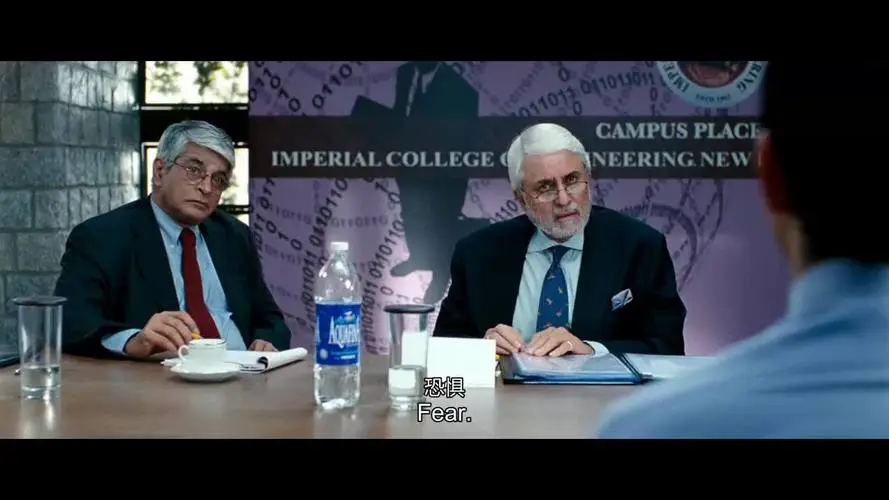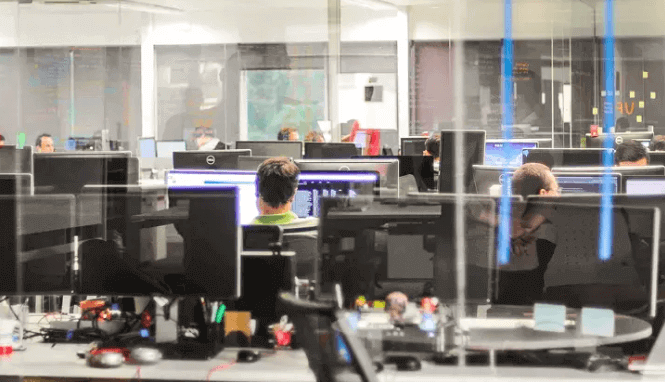Have you ever encountered a bottleneck?
This term can be understood as a difficult obstacle in personal development or career progress, something that is hard to overcome. It's like the neck of a bottle, where the narrow part blocks the flow of water.
In a production line, a bottleneck refers to a critical but problematic link. For example, if the speed of a certain process slows down or there is another issue, it will affect the speed and quality of the entire production.
Specifically, the slowest link in the production line is called the "bottleneck." In addition, a bottleneck doesn't just mean slow speed; it can also involve factors like insufficient manpower, delayed materials, machine breakdowns, poor information flow, etc.
Therefore, bottlenecks exist in any system; they represent the weakest links.

Part One
However, when many people encounter a bottleneck, they do not actively deal with it, and end up going in circles, still facing the same issue. Recently, I watched "Goodbye My Love 4," and a conversation between Li Xingliang and Mai Lin reminded me of a dialogue from "The Best of Us":
Woman: You don’t understand me at all. Man: How would I understand if you don’t speak up? Woman: True understanding doesn’t require words. Man: But if you speak, wouldn’t I understand? Woman: What’s the point of saying it? You should understand without me saying anything.
Man: I’m not a fortune teller; how would I know what you mean? Woman: I don’t mean anything. Man: Yeah, you really don’t mean anything. Woman: So, when I speak, you think it’s meaningless?
Man: Is what I said meaningless? Woman: Does it become meaningless because I said it? Man: So what do you actually mean?
Isn’t this conversation interesting? In my view, there are three levels to a bottleneck:
The first level refers to mental pressure points.
When our minds are overwhelmed with too many thoughts, we can become disorganized or even frustrated. At this point, many people try to focus to resolve the situation. Focusing means quickly choosing one or a few ideas out of many tasks to concentrate on. Once the focus is on a specific idea, the pressure feeling disappears.
The second level might be less friendly and is called the "critical point." What does it mean?
Most people may think of running when it comes to critical points. For example, at first, running feels exhausting, but after a while, it becomes easier. Or, when accumulating wealth, progress is slow at first, but once a certain point is reached, wealth begins to grow rapidly.
So, the critical point is like a hurdle on the path forward. But is it really just a hurdle? I don’t think so. I believe the critical point is the condition required to shift from one state to another.
Imagine two states: State A and State B. The critical point can be seen as a small river between A and B, and our task is to build a bridge from A to B.
With this view, the critical point is not just a simple goal on the way forward. We should focus on the connection between these two states.
When doing something, it’s not always necessary to cross the critical point. We should analyze the situation carefully. How to analyze? First, clarify your position and goals.
Position refers to your current state.
Goal refers to the state you want to reach.
When these two states differ, you need to make an effort to cross the critical point. However, if your position and goal are the same, then stop pushing, because too much effort may divert you from the goal.
A simple example:
You work in a company, and State A is “uninterested in the work,” while State B is “wanting better career development.”
To solve A, you might consider finding a new job with more potential; in this case, updating your resume and attending interviews is a good option.
However, if you're still "uninterested in your work," but now you want to start your own business, it’s different. In this case, you need to assess yourself, find your own pace, and gradually build a bridge from stable employment to entrepreneurship. Thus, different critical points lead to different paths.
In the past, I saw many people try to go solo, but they ended up returning to the workplace.
For instance, someone worked in marketing for 7 years and then ventured into self-media. However, self-media and team management are two completely different things. This shows that the key issue was an inaccurate judgment of their own critical point, choosing the wrong path and learning methods that didn’t suit them. Self-media involves writing, editing, and planning—skills that may not have been practiced in the company.
Thus, we need to understand where our own critical point lies.
Part Two
The third level is related to marginal effects.
I once had a colleague who was responsible for the company's self-media, and later he quit to become a freelancer. A year later, I heard he returned to the company, probably because his money ran out and his career didn't meet expectations.
We used to say "practice makes perfect," but now it seems that practice might lead to "boredom." Once you're proficient in a field, it seems like you can’t escape "career stagnation."
This is not hard to understand. As you get more skilled at your work, the space for progress in that field becomes smaller. This is called "diminishing marginal returns" in economics.
For example, if you're hungry and eat three buns, you feel full. These three buns are the same, but the first one tastes the best, and the satisfaction from the last two decreases.
Many students face bottlenecks when preparing for exams. No matter how many practice questions they do or lectures they attend, their scores won’t improve. Sometimes, the more questions they do, the worse their scores get.
Why does this happen?
At first, doing hundreds of questions can significantly improve your accuracy. But as the knowledge increases, with more points to master, the scores don’t improve noticeably. This means the effectiveness of doing questions decreases. Therefore, I believe that after reaching 60 points in civil service exams, each extra point requires doing about 1,000 more questions.
Career stagnation is similar to practicing questions. So, what to do when your career stagnates? The answer lies in its opposite—increasing marginal returns.
Let’s first look at what increasing means.
In simple terms: the more you invest, the more you gain. For example, when you plant vegetables, you harvest some vegetables from the first plant. When you plant the second and third, the harvest increases. If you continue planting, each additional plant could greatly increase your total harvest, possibly reaching a new height—this is increasing marginal returns.
So, how can career growth be achieved? From my observation, achievements in work depend on two key resources:
One, professional skills, knowledge, thinking, personality, and social relationships—these are like fixed resources in a factory, such as the building, technology, and equipment. The second type is time, effort, and reinvestment costs. These require continuous investment, just like raw materials, labor, and capital in a factory. The more you invest, the more you get.
By combining these two, you’ll find that with the foundation of A, continuously investing in B will increase your output.
In the early stages, with more investment in A, your abilities grow quickly, and you feel accomplished. However, when B reaches a certain level, if A hasn’t kept up, you will encounter a bottleneck.
In simple terms, many people experience career stagnation not because of time, but because the growth of the first factor slows down.
In other words, as you age, learning and adaptability might decline. If there’s no continuous investment in professional skills and knowledge updates, career development will stagnate, and this is the "bottleneck period."
Part Three
In fact, bottlenecks themselves are influenced by the way we think. When I meet people outside, I like to use a "total thinking" approach, which focuses on the overall impression of the person.
For instance, when meeting someone for the first time, I consider their appearance, temperament, manner of speaking, and overall first impression. This method allows me to quickly form an initial judgment about the person.
However, during subsequent meetings, the situation changes. I begin to think about how this meeting differs from the last. What factors are positive, and which are negative?
For example:
Positive factors could be that the person has become more humorous, the conversation is more engaging, or new topics were introduced. Negative factors could include a change in attitude, inappropriate behavior, or inattentiveness during the conversation.
However, when evaluating ourselves, we often use marginal thinking.
You can view career development as a system with a total score of 100 points. In this system, achieving 70 points allows you to reach middle management, and the remaining 30 points are the abilities and experiences needed for senior executive positions. These 30 points are difficult to achieve because they require a broader perspective.
When we think about how to earn those additional 30 points, we are focusing on the things we need to improve. But marginal thinking can make us forget the overall picture. Sometimes, people confuse tenure, relationships, and experience.
Many people think: "I’ve worked here for so many years. I’m a senior employee. If I don’t get promoted, who will?" This mindset can lead to complacency, believing that just staying long enough in a company guarantees a promotion.
Looking at bottlenecks with total thinking helps reveal that sometimes the issue is because the first resource factor has a problem. In other words, after reaching 70 points, the performance begins to drop.
Many people facing this decline might try to increase other factors, such as working overtime or learning new skills. But if the bottleneck in the resource factors remains, the more you invest, the worse the outcome might be, and the more you try, the more tiring it becomes.
Therefore, to overcome a career bottleneck, we need to shift the time and energy spent on the second resource factor and invest them in upgrading the first resource factor. This way, the "diminishing marginal returns" curve will flatten, and we can delay the arrival of the "personal capacity inflection point."
Part Four
This is also why many companies like to assign job rotation to middle managers.
I have a friend who worked in marketing at a large company for several years and encountered a typical career development bottleneck. Later, he was transferred to product operations, and his situation changed.
In the second year, his new responsibilities and performance evaluation forced him to consider marketing placements from an operational perspective. This changed his view of marketing. Although job rotation resulted in some short-term losses, it helped improve his personal skills because different positions require different "resource factors." Job rotation stimulates the input level of these resource factors.
I believe that if he returns to the marketing department, his understanding of the field will be renewed. This is the way to break through a bottleneck.
In summary, a bottleneck is a gift. It subconsciously reminds us:
We are under pressure and need to focus on solving it.
If we can’t resolve the issue by focusing on the problem, we need to identify the critical point. Think about whether your current state matches your goal, and how to transition to the next stage.
Your efforts have reached a total limit. In other words, no matter how hard you try, it only goes so far.
Exploring new fields marks the beginning of increasing marginal returns. Keeping this increase is difficult, but it can be achieved through planning. For example, opening a coffee shop, Luckin has 21,000 stores because the first resource factor is fixed, while the second resource factor is variable.
Conversely, if the first resource factor is variable, no matter how much you invest in the second resource factor, it’s hard to control. Life is not as simple as "getting richer" as depicted in books; many upward development patterns have to be designed by ourselves.
I hope that when you encounter a bottleneck, you will use "total thinking" to address everything.






